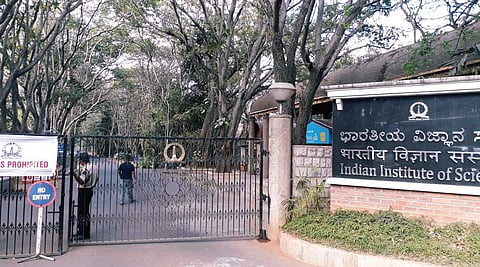

BENGALURU: While the state government is pitching for a 195-km tunnel road project as a solution to Bengaluru’s traffic woes, experts from Indian Institute of Science (IISc) have submitted a report indicating that it will be a disaster for the city. The project will neither help ease congestion nor reduce air pollution in the city.
The report was submitted to the government on September 5 as part of the input for the Brand Bengaluru concept. Despite that, on October 5, Deputy Chief Minister and Bengaluru Development Minister DK Shivakumar told reporters that tenders will be invited for the “ambitious” project within 45 days.
Shivakumar had announced that the project will be implemented in stages, connecting Ballari Road, Old Madras Road, Esteem Mall Junction-Mekhri Circle, Millers Road, Chalukya Circle, Trinity Circle, Sarjapur Road, Hosur Road, Kanakapura Road-Krishna Rao Park, Mysuru Road-Sirsi Road, Magadi Road, Tumakuru Road-Yeshwantpur Junction, Outer Ring Road, Goraguntepalya, KR Puram and Silk Board.
Prof Ashish Verma, convenor, Transportation Systems Engineering Cell, Sustainable Transportation Lab, IISc, told The New Indian Express that the stretches the government is talking about are same as the north-south and east-west elevated corridor project proposed earlier.
He said a simulation model study of the stretches has been done and Metro, as a mode of transport, was found to be an ideal solution.
Researchers studied three models – without tunnel road construction, with tunnel road construction, and with Metro constructed instead of tunnel road — along the same proposed corridor. The models were analysed for 2020 and 2030.
‘Metro 40 times more efficient...’
“It was found that a one km tunnel road with a width of 3.5 metres will carry 1,200 passengers per direction. The same width, on which a Metro track can be built, will carry 69,000 passengers, in a nine-car coach. Thus, Metro is found to be 40 times more efficient with the same construction cost. The tunnel boring machine (TBM) used for Metro will also be used for the tunnel road project. So at the same cost, more people can be moved from one location to the other instead of a tunnel road,” Prof Ashish Verma said.
The report also showed that the area occupied by cars is eight times the space occupied by buses and the area occupied by two-wheelers is five times the space occupied by buses.
The study also showed that a single track light rail transit (LRT) system can accommodate 30,000-40,000 passengers per hour per direction (PPHPD), which is 16.6-22.2 times more passengers than on tunnel roads; also a single track metro rail transit system can accommodate 69,000 PPHPD, which is 38.3 times more passengers than on tunnel roads. The roads with usual traffic handle 1,800 PPHPD.
Under the vehicle-km travelled category comparison, the report showed that there would be a 2.7% increase in the number of vehicles in 2023 if tunnel roads are constructed and a 5.3% reduction in the number of vehicles if Metro is used.
It also highlighted that reduction in carbon dioxide emission and particulate matter (PM2.5) would be 14.8% and 18.6%, respectively, when Metro is used instead of tunnel roads in 2031. The tailpipe emissions (vehicular emissions) of carbon monoxide and nitrous oxide levels would also drop by 27.2% and 11.3%, respectively.
Using the simulation model, the IISc study also highlighted that the number of deaths due to accidents per year is expected to rise to 1,069 in 2031 if tunnel roads are constructed. But it will reduce to 830 with Metro and its extensions without tunnel roads.